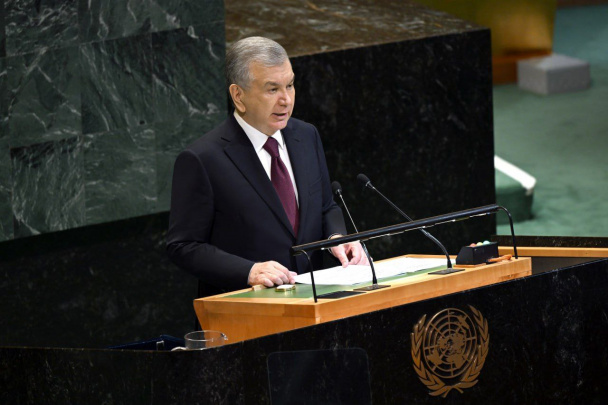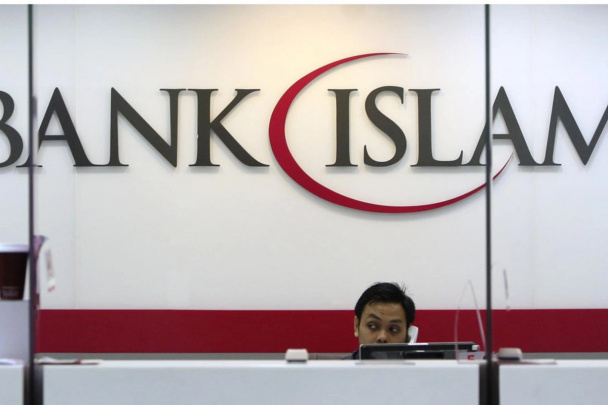Ministry of Finance provides info on usage of Uzbekistan’s SDG debts
Uzbekistan issued sustainable development goals bonds for the first time last year. The representative of the Ministry of Finance informed Kun.uz that the funds were spent on the construction of schools, kindergartens, hospitals, drinking water networks and metro, and vaccination of children. All future bonds are planned to be issued under SDG or green bond principles.

On July 12, 2021, for the first time, international sovereign bonds in the national currency in the amount of 2.5 trillion soums aimed at achieving the “Sustainable Development Goals” (SDGs) of the Republic of Uzbekistan were placed on the international financial market.
What are SDG bonds, and what is the benefit to Uzbeks? Sherzod Komilov, deputy head of the Department of Foreign Financial Markets of the State Debt Department of the Ministry of Finance, told Kun.uz about such questions.
- What is a bond?
- A bond is a debt security issued by a government or company. To the owner of the bond, i.e. to the investor who bought it, the issuer (bond issuer) who issued the bond pays fixed interest in the specified amount for a specified period of time, and at the end of the term, the principal debt is also returned to the bond holder.
If I explain in simple language, the buyer of such a security becomes a creditor of the security, that is, a lender. Just like a bank loan, a certain amount of annual interest is paid to the lender. Unlike a loan, the principal is returned to the buyer at the end of the bond’s term.
Eurobonds are bonds issued in a currency foreign to the issuer. For example, Uzbek bonds placed in the international financial markets in US dollars are called Eurobonds. Our bonds placed in the international financial markets in national currency are sovereign international bonds.

- What do we mean by Uzbekistan issuing a bond?
- Uzbekistan issued a bond and placed it on the international financial market, in simple terms, it means that Uzbekistan attracted debt from investors with the condition of paying a certain annual interest payment and repaying the principal debt at the end of the specified period.
In our example, in 2021, we issued a bond in the amount of 2.5 trillion soums for a period of 3 years at 14.0% per annum.
Of course, in front of international investors, we have undertaken the obligation to spend these loan funds only for the specified purposes.

- What sectors were SDG bonds directed to?
- As for SDG bonds, 17 goals have been included in the Sustainable Development Agenda until 2030 developed by the United Nations, which are mainly aimed at increasing the socio-economic level of the population.
For example, reducing poverty, improving living standards, ensuring healthy lifestyles, improving the quality of education, supporting gender equality, providing clean drinking water, creating decent jobs, promoting economic growth and improving infrastructure sustainability.
Uzbekistan has also developed a Sustainability Model that includes 16 national SDGs that are in line with UN goals. This shows that the government of Uzbekistan is determined to achieve the SDG. However, achieving these goals requires not only determination and a strong will, but also a large amount of investment funds. According to the results of the assessment conducted by the United Nations Development Program (UNDP), investments in the amount of 4.6-6 billion US dollars per year are needed for the country to reach its national SDG.
Therefore, in order to attract the necessary funds, the Ministry of Finance launched thematic bond issuance practices, which allow to attract international investors and reach the national SDG.
As a result, the program of SDG Bonds of Uzbekistan was developed in 2021.
This program is developed on the basis of international standards and defines the mechanisms of distribution, spending of funds received from SDG bonds and monitoring of projects financed by them.
- How were the proceeds from the bonds spent?
- Funds from the placement of SDG bonds were used to cover the expenses of the republican budget for financing projects aimed at achieving national sustainable development goals in accordance with the SDG Bonds program of Uzbekistan.
Projects cover areas such as health, education, water supply and irrigation, and public transport.
Effectiveness of selected projects across the Republic:
ꞏ 12 new kindergartens were built and 23 existing kindergartens were reconstructed;
ꞏ 2 new schools were built and 31 existing schools were reconstructed;
ꞏ 7 new hospitals were built and 29 existing hospitals were renovated;
ꞏ 19,770,423 doses of 10 types of vaccines were purchased for children aged 0-16;
ꞏ 82.8 km of canals were repaired within 14 projects;
ꞏ 222 km of drinking water and sewage pipelines were built and reconstructed;
ꞏ 33.1 km long was partially directed to the construction of new aboveground and underground metro lines.


A part of the proceeds from the bonds was directed to cover the costs of the republican budget for the construction of the new aboveground circle subway in Tashkent and new stations on the underground-Sergeli and Yunusabad lines.
In particular, 922 billion soums allocated from the republican budget for the construction of the new aboveground ring subway in Tashkent, worth about 4 trillion soums, were covered by our 2.5 trillion soum bonds.
- Why were bonds not issued in 2022?
- Due to the geopolitical situation in 2022, interest rates rose as a result of instability in the international financial markets. For example, the yield on our USD-denominated sovereign bonds rose to 9.5% in the secondary market. This does not affect the interest payments on the bonds we have placed in previous years as they are fixed, but in the 2022 market we would have placed new bonds at around 9.5%. For comparison, the interest rates of our sovereign bonds issued in 2021 are 3.7-3.9% per annum.
We issue bonds mainly to cover the republic budget deficit, and in 2022 it was planned to issue them in the 2nd quarter of the year. However, we decided not to issue sovereign bonds in such a market situation, and instead managed to attract funds planned at the beginning of the year to cover the budget deficit by doubling the size of our bonds for the domestic market, that is, our state treasury bonds, and obtaining preferential loans from international financial organizations.
As for next year’s plans for bond issuance, the Ministry of Finance is aiming to issue all future bonds under SDG or green bond principles.
However, if the state of the international financial markets remains as it is now, we will not issue sovereign international bonds in 2023 either.
Related News

11:19 / 03.11.2025
Shavkat Mirziyoyev to visit Qatar

12:04 / 24.09.2025
President Mirziyoyev reaffirms Uzbekistan’s goal to reach upper middle-income status by 2030

18:50 / 15.09.2025
Uzbekistan drafts bill to introduce Islamic banking

17:38 / 05.08.2025



